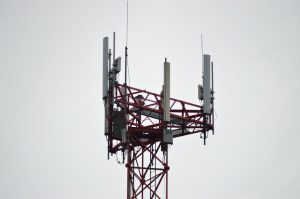Starlink: Revolutionizing Global Connectivity with Satellite Internet

Starlink: Revolutionizing Global Connectivity with Satellite Internet
Starlink, the focus keyword, is a satellite internet constellation developed by SpaceX, a private aerospace manufacturer and space transport services company founded by Elon Musk. The project aims to provide high-speed, low-latency internet connectivity worldwide, particularly in areas where traditional fiber-optic networks are lacking or non-existent. With the launch of its first batch of satellites in 2019, Starlink has been rapidly expanding its constellation, with over 2,000 satellites currently in orbit.
How Starlink Works
Starlink uses a network of low-Earth orbit (LEO) satellites, which operate at an altitude of approximately 550 kilometers. These satellites are equipped with advanced communication technology, allowing them to transmit and receive data at speeds of up to 1 Gbps. The satellites are connected to a network of ground stations, which provide the necessary infrastructure for data to be transmitted and received. Users can access the internet through a small, portable satellite dish, which communicates with the satellites in orbit.
Benefits of Starlink
The benefits of Starlink are numerous, with the potential to revolutionize the way we communicate and access information. Some of the key advantages include:
Global coverage: Starlink aims to provide internet connectivity to every corner of the globe, regardless of geographical location or infrastructure. This will enable people in remote or underserved areas to access the internet, bridging the digital divide and promoting economic growth.
High-speed connectivity: Starlink offers fast internet speeds, comparable to those of traditional fiber-optic networks. This will enable users to stream video content, engage in online gaming, and access cloud-based services with ease.
Low latency: The use of LEO satellites reduces latency, ensuring that data is transmitted and received quickly. This is particularly important for applications that require real-time communication, such as video conferencing and online gaming.
Challenges and Future Developments
While Starlink has made significant progress, there are still challenges to be addressed. Some of the key concerns include:
Space debris: The launch of thousands of satellites into orbit has raised concerns about space debris and the potential for collisions. SpaceX has implemented measures to mitigate these risks, including the use of de-orbiting technology to remove satellites from orbit at the end of their lifespan.
Interference: The use of LEO satellites has raised concerns about interference with other satellite systems and radio communications. SpaceX is working to address these issues, through the development of advanced filtering technology and coordination with other satellite operators.
Regulatory frameworks: The development of Starlink has highlighted the need for updated regulatory frameworks, to govern the use of satellite internet constellations. Governments and international organizations are working to establish new rules and guidelines, to ensure the safe and responsible development of these systems.

